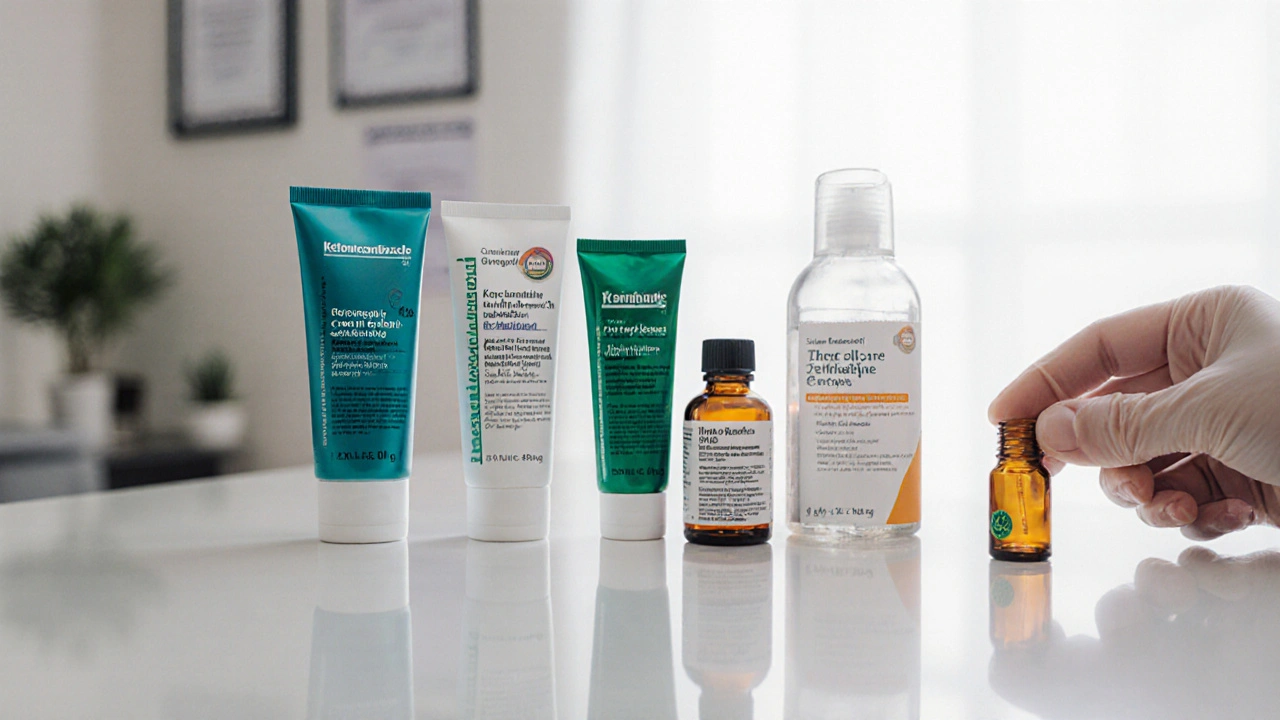Clotrimazole – What It Is and Why It Matters
When working with clotrimazole, a topical azole antifungal used to clear skin fungal infections. Also known as Canesten, it belongs to the azoles, a class of compounds that disrupt fungal cell membranes by inhibiting the synthesis of ergosterol. This chemical action stops the fungus from growing, turning stubborn rashes into clear skin within days. Because it’s an antifungal medication, clotrimazole is often the first line of defense against common dermatophyte infections like athlete’s foot, ringworm, and yeast‑related irritations. The drug comes in creams, powders, and sprays, making it easy to apply to toes, groin, or any affected area. In practice, the simple rule is: apply a thin layer twice daily, keep the skin clean, and avoid covering the spot with airtight dressings unless advised. This routine lets the medicine reach the fungus and reduces the chance of recurrence. The relationship between clotrimazole and skin health is clear: clotrimazole treats fungal infections, azoles provide the chemical backbone, and antifungal products deliver the cure.
When to Use Clotrimazole and How It Fits Into Everyday Care
If you notice itching, redness, or a scaly rash between your toes, in the groin, or on the body, you’re likely dealing with a tinea infection (also called athlete’s foot, jock itch, or ringworm). For yeast‑related problems such as candidiasis in warm, moist areas, clotrimazole works just as well. The drug’s broad spectrum means you don’t need a separate prescription for each type – one cream can handle multiple fungal culprits. Application is straightforward: wash the area with mild soap, pat dry, then spread a thin layer of the cream. Most people see improvement after three to five days, but completing the full course (usually two weeks) is crucial to prevent hidden fungi from bouncing back. Some users combine clotrimazole with a mild steroid like hydrocortisone to reduce inflammation, but that combo should only be used under professional guidance. Safety-wise, clotrimazole rarely causes systemic side effects because it stays on the skin, but a few people may experience mild burning or redness. If you have a known allergy to azoles, skip it and talk to a pharmacist about alternatives such as terbinafine or miconazole. In real‑life settings, athletes, hikers, and anyone who wears tight shoes often find clotrimazole essential for keeping foot health in check, while parents rely on it to treat diaper‑area yeast infections quickly.
The posts you’ll see below dive deeper into topics that often intersect with clotrimazole use. We cover how other prescription drugs compare, tips for buying cheap generics safely, and practical advice on managing side effects of common medications. Whether you’re curious about the latest antifungal research, want to understand drug interactions, or need guidance on reliable online pharmacies, this collection gives you clear, actionable information. Scroll down to explore detailed comparisons, safety checklists, and buying guides that complement the everyday use of clotrimazole and help you stay ahead of skin‑related health issues.
Ketoconazole Cream vs. Top Antifungal Alternatives: A Detailed Comparison
A comprehensive side‑by‑side look at ketoconazole cream versus clotrimazole, miconazole, terbinafine, ciclopirox and natural options, with pricing, safety tips and a FAQ.
View More
